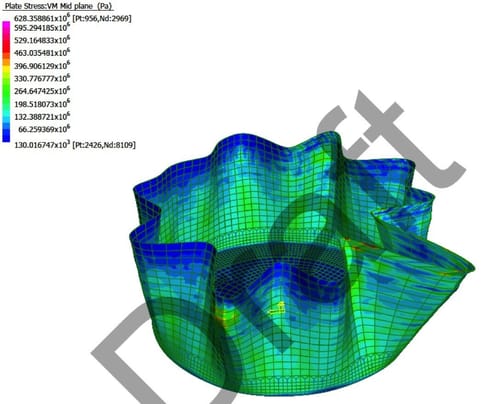
Numerical Dissimulation

We’ve recently found ourselves working on several projects afflicted by badly flawed numerical modeling. And not just little errors with inconsequential effect. These mistakes demonstrate a fundamental misunderstanding about how numerical models work and how to deploy them in Engineering. All of you surely have your own examples of numerical modeling gone awry; here are the two most recent from our practice:
1. Search constraints in a slope stability model were deliberately set farther upslope than the slope geometry could possibly support, so the Engineer was unwittingly searching for failure surfaces other than the critical surface. I told the Engineer that the computed safety factor was only valid if the lower (less-stable, light blue) part of the slope could reach up across that little narrow neck at the scarp and grab the upper part (yellow-ish), dragging it down the hill like the caboose on an impossible failure-train. Yes, we’re interested in the stability of that area back from the crest, but no, forcing the model to violate the basic premise of Method-of-Slices stability analyses does not provide useful insight.

2. Hydrotesting a new canola oil tank caused it to tilt 275 mm across the 36 m diameter. An Engineer was engaged to assess the structural integrity of the tank and, unfortunately, interpreted that assignment as license to run wild with a bunch of structural finite element software. One of the runs showed tank shell stresses 3.5 times higher than the steel strength, which would have caused catastrophic failure before the end of the hydrotest. When I observed that the tank is still standing and the computed result contradicts observed fact the Engineer doubled down on his computations, effectively stating that reality exists in the computer, not the tank.

It seems to me that modeling failures like these are increasingly frequent as mesh generators and improved interfaces make the software more accessible. The improved speed and efficiency that facilitates competent modeling are just as helpful to the ignorant modelers, allowing them access to new tools that they do not understand and yielding answers that do not represent actual conditions.
I expect that, over time, a few designs based on flawed models will find their way into our built infrastructure. I hope that the resulting losses are only financial, and that before too long we find a way to re-emphasize the proper relationship of modeling in support of engineering, rather than modeling as a time-saving substitute for engineering.

Doug founded Atlas Geotechnical in 2004, and focuses on working for Contractors and Operators, tackling the most challenging problems.